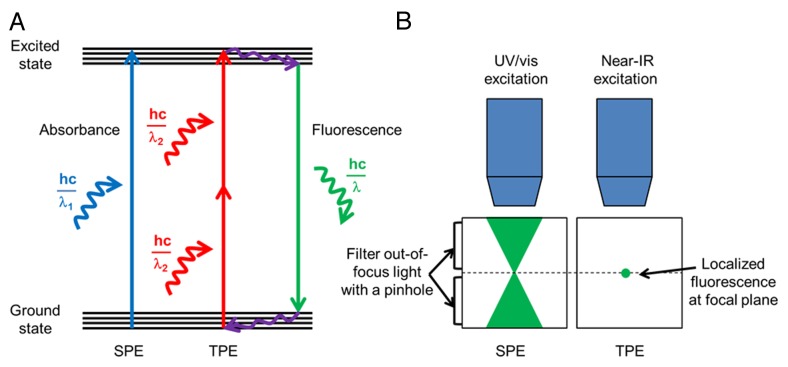Figure 1. Comparison of single photon excitation (SPE) with two-photon excitation (TPE). (A) A single photon of higher energy (E = hc/λ1) is absorbed in SPE to produce fluorescence emission. In TPE, two lower energy photons (each with E = hc/λ2) are absorbed nearly simultaneously to produce the same fluorescence effect. Near-infrared lasers are used in TPE, which emit photons that have double the wavelength of photons used in SPE (λ2 = 2λ1). hc/λ is the energy of a photon, h is Planck’s constant, c is the speed of light, and λ is wavelength. (B) In SPE techniques, such as confocal microscopy, a cone of fluorescent light is emitted within the sample. To obtain an image localized to the focal plane, a pinhole must be used to filter the out-of-focus light in SPE. In TPE, fluorescence is inherently localized to the focal plane and thus all emitted photons can be collected. The localized fluorescence in TPE leads to less phototoxicity and less photobleaching as compared with SPE.

An official website of the United States government
Here's how you know
Official websites use .gov
A
.gov website belongs to an official
government organization in the United States.
Secure .gov websites use HTTPS
A lock (
) or https:// means you've safely
connected to the .gov website. Share sensitive
information only on official, secure websites.
